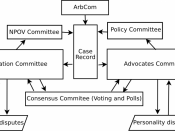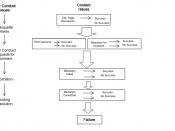AbstractAlternative Dispute Resolution (ADR) is an important part of a court's structure in that it allows disputes to be resolved without the need for litigation or further legal action. This paper will discuss the benefits of using ADR within the workplace and will also address the many forms of ADR that can be chosen based on what would best fit the dispute. This paper will also provide an example of the use of ADR in the workplace and how the dispute was handled and resolved. It will also discuss how ADR avoided further litigation.
Alternative Dispute ResolutionAlternative dispute resolution (ADR) encourages the settlement of a dispute between parties in a less formal atmosphere than a court room with the assistance of a third party, often called a mediator. "Alternative Dispute Resolution (ADR) is a process in which a third neutral party assists in resolving disputes by using various techniques to reach a resolution acceptable to the parties" (The U.S. Equal Employment Opportunity Commission, 2005).Unlike
litigation ADR is based upon the notion of an early settlement agreement, which aims at increased participation and increased control for the parties who are involved. Given the continually increasing costs of litigation in terms of money, time and resources, organizations are increasingly showing a preference towards alternative dispute resolution.
Options for ADRAlternative dispute resolution has many forms in which the parties in a case may choose to use. "The most common form of ADR is arbitration. Other forms of ADR are mediation, conciliation, minitrial, fact-finding, and a judicial referee" (Cheeseman, 2004, p.41). Arbitration involves a third party, called the arbitrator who is a neutral party to both sides. During ADR the arbitrator listens to each side and makes a decision that is known as a reward, which both parties will hopefully...


